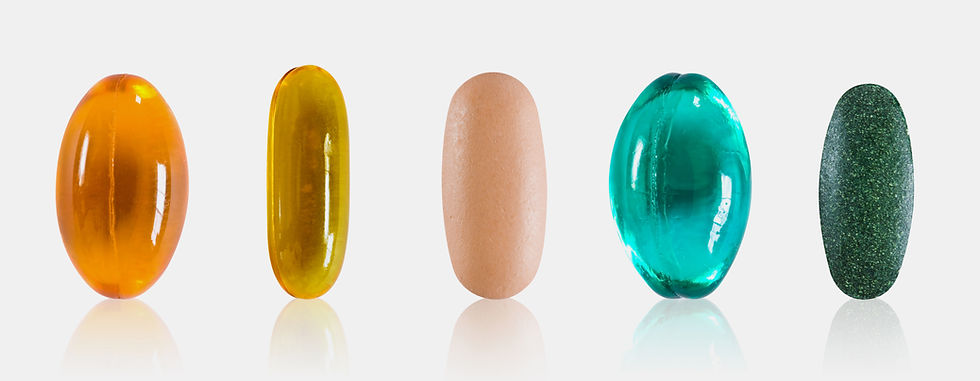Wrestling and Dead Legs
- Keep Kids Wrestling Non-Profit
- Jul 29
- 4 min read
Hey wrestling parents! If your wrestler has ever come off the mat complaining that their legs feel "dead," drained, or too tired to move, you're not alone. This heavy-legged sensation is a common experience among wrestlers, especially during intense training periods or after cutting weight. Understanding what causes this feeling and how to address it can help your wrestler stay strong and recover faster.
Let’s break down why it happens, what’s going on in your wrestler’s body, and how to help them manage and overcome it.

What Causes That "Dead Leg" Feeling?
The sensation of having "dead legs" comes from a combination of factors that can strain a wrestler’s lower body. Here’s what’s happening:
Muscle Fatigue from Intense Activity Wrestling, running, and weight training all put significant demands on the leg muscles, particularly the quadriceps, hamstrings, calves, and glutes. Over time, these muscles can become fatigued, leading to a heavy, sluggish feeling.
Blood Flow and Oxygen Delivery During exercise, blood flow increases to deliver oxygen and nutrients to working muscles. However, intense activities like sprinting or wrestling can push the muscles beyond their oxygen supply, causing a buildup of metabolic byproducts, such as lactic acid. This contributes to that burning sensation and the "heavy" feeling in the legs.
Lactic Acid and Hydrogen Ions Lactic acid forms during anaerobic activity (when the body works hard without enough oxygen). It’s not lactic acid itself that causes fatigue, but the hydrogen ions released alongside it. These ions lower the pH in the muscles, making them acidic and impairing their ability to contract efficiently.
Cutting Weight and Dehydration Wrestlers often cut weight to make their weight class, which can involve dehydration or calorie restriction. Dehydration reduces blood volume, impairing circulation and muscle function. Calorie deficits mean the body has less energy to fuel workouts, leading to faster fatigue.
Tight Muscles Overworked leg muscles, particularly the quadriceps, hamstrings, and calves, often become tight. Tightness reduces flexibility and blood flow, exacerbating the feeling of fatigue and making movements feel even harder.
What Muscles Are Most Affected?
The following muscle groups are the primary culprits behind "dead legs":
Quadriceps: These large muscles on the front of the thigh take a beating during lunges, sprints, and takedowns.
Hamstrings: Located on the back of the thigh, these muscles help with explosive movements like jumping and pushing off during a match.
Calves: Supporting every step, jump, and pivot, the calves can become overworked and tight.
Hip Flexors and Glutes: These muscles stabilize the hips during wrestling moves and are often under strain.
When these muscles are overused, they not only feel fatigued but can also develop knots or trigger points, making them stiff and painful.

Relieving Leg Fatigue and Tightness
Addressing "dead legs" involves improving blood flow, relaxing tight muscles, and replenishing energy. Here’s what it takes:
Stretching and Mobility Work Stretching improves flexibility, increases blood flow, and reduces tension in overworked muscles. Focus on:
Quadriceps Stretches: Pull your heel toward your glutes while standing to stretch the front of your thighs.
Hamstring Stretches: Sit on the floor with one leg extended and reach toward your toes.
Calf Stretches: Use a wall to stretch the back of the lower leg.
Hip Flexor Stretches: Perform lunging stretches to open up the hips.
Foam Rolling and Massage Foam rolling breaks up muscle adhesions and improves circulation. Your wrestler may feel tenderness during rolling, but this is normal and helps release tight areas. A professional massage can also provide relief by targeting deeper muscle tension.
Hydration and Nutrition Ensure your wrestler is drinking enough water, especially during weight cuts. Incorporate electrolyte-rich drinks to replenish lost minerals. Post-training meals should include carbohydrates (for energy) and protein (to repair muscles).
Active Recovery Light activities like walking, swimming, or cycling increase blood flow without adding more strain. This helps flush out lactic acid and promotes faster recovery.
Restorative Sleep Sleep is when the body repairs itself. Encourage your wrestler to get 7-9 hours of quality sleep each night to aid recovery.
What Does Recovery Feel Like?
Recovering from "dead legs" can take time, but the process often brings immediate relief:
After Stretching or Foam Rolling: Your wrestler might feel some initial discomfort, but the muscles will feel looser and more relaxed afterward.
Post-Hydration and Nutrition: Replenishing lost fluids and nutrients can restore energy levels, leaving your wrestler feeling recharged within a few hours.
After Active Recovery: Light exercise might feel tough at first, but it often alleviates stiffness and improves muscle function by the end of the session.
The more consistently your wrestler incorporates recovery practices into their routine, the better they’ll feel, and the faster they’ll bounce back.

How Recovery Impacts Training
Managing leg fatigue is essential for maintaining consistent performance in training and competition. When your wrestler takes steps to prevent and address "dead legs," they’ll notice several benefits:
Improved Stamina: Recovered muscles perform better and tire less quickly.
Reduced Injury Risk: Stretching and mobility work improve flexibility, preventing strains and sprains.
Enhanced Strength and Power: Proper recovery allows muscles to repair and grow stronger, improving overall athletic performance.
Better Mental Focus: A well-rested and energized wrestler can focus better during matches and practice.



Comments